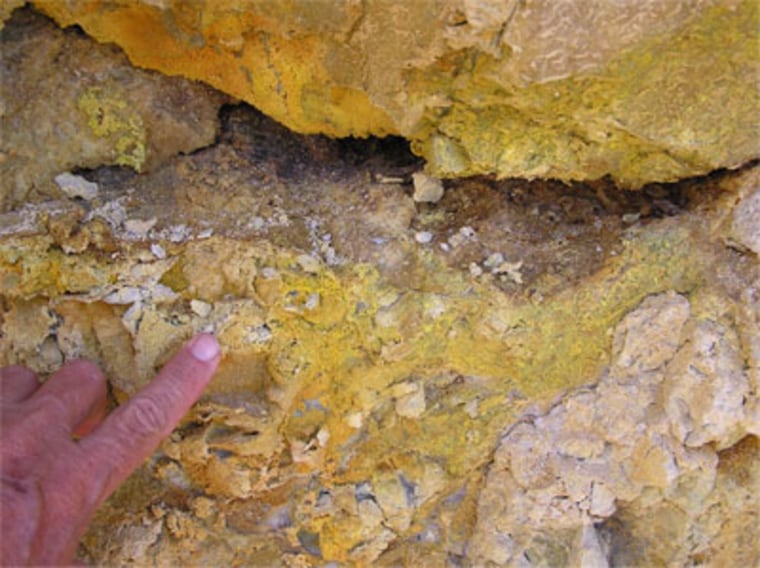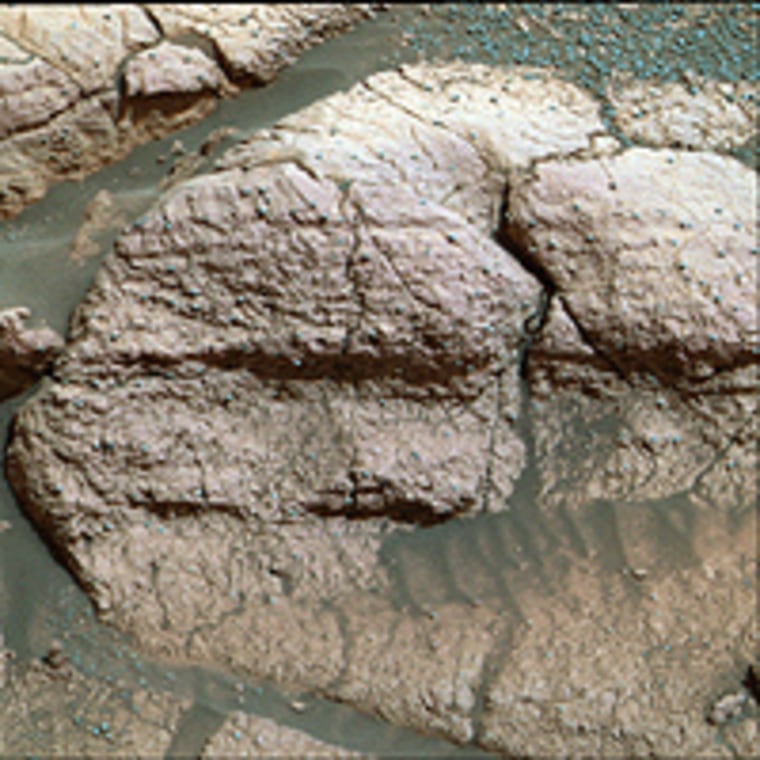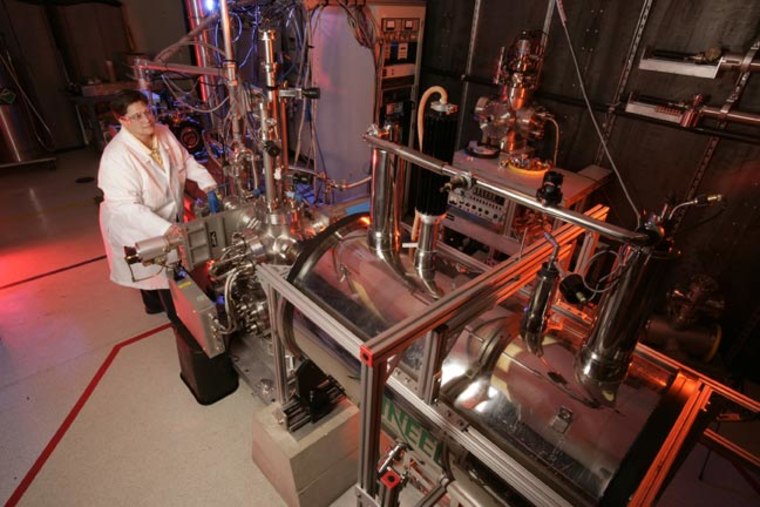Signs of life on Mars may be hiding under its rocks, or perhaps hiding inside those rocks. A new study offers a simplified technique for detecting biological and prebiotic molecules that become trapped inside minerals.
Studying seven samples of the mineral jarosite collected from various places on Earth, researchers were able to identify amino acids, the basic components of proteins, that had presumably been incorporated into the mineral's crystal structure.
Although this was not the first time biological compounds have been detected inside rock, the new method has the advantage that it works "at very low concentration without prior sample preparation," said Nancy Hinman of the University of Montana.
Hinman and her colleagues believe their technique would be perfect for looking at Martian samples brought back from a future mission.
Minerals and microbes
Jarosite is a yellowish-brown sulfate mineral containing iron, potassium and hydroxide. It is found in places around the world such as southern California beaches and volcanic fields in New Zealand. It forms only in the presence of highly acidic water.
In 2004, jarosite was discovered on Mars by Opportunity, one of NASA's Mars Exploration Rovers. Scientists immediately heralded it as clear evidence for past water on the Red Planet.

But there is something else about jarosite that makes it interesting. One of the steps in its formation involves combining pyrite (ferrous sulfide) with oxygen. This oxidation reaction can be performed by certain "rock-eating" microorganisms.
"The rate of the jarosite formation would be extremely slow without microbes and the presence of water," Hinman said.
Whether jarosite can form without the assistance of these microbes is very difficult to say, since every corner of Earth is occupied by little bugs of some sort or another.
"I don't know of any environment devoid of microorganisms," Hinman said. "Earth is not a good test bed for abiotic processes."
But perhaps Mars is. There are theories for how jarosite might form in the absence of life.
"It's a very oxidizing environment on Mars," explained co-author Michelle Kotler, also from the University of Montana. Jarosite could therefore arise from chemical weathering of the planet's abundant basalt rocks.
Garbage can
And yet, there remains the tantalizing possibility that martian jarosite owes its existence to the martian version of rock-eating microbes. If so, remnants of these organisms may be locked in the mineral.
This is because jarosite on Earth is known to let all sorts of foreign elements incorporate into its crystal structure.

"It's a bit of a garbage-can mineral," Hinman said.
Among the foreign substances are organic compounds. However, previous techniques for detecting them required that the jarosite be dissolved in a solution or mixed in with some other medium, which dilutes the sample and runs the risk of introducing contamination.
"We are very concerned about contamination," Hinman said.
Hinman and her colleagues have a technique that requires no sample preparation. They use a laser-based optical and chemical imager (LOCI), located in co-author Jill Scott's lab at the Idaho National Laboratory. A single laser shot vaporizes a small portion of the crystal surface into individual ions. These pass through a mass spectrometer, which can identify each ion by how much mass and charge it has.
In four of the seven samples, the scientists detected glycine, the smallest of the amino acids required for making proteins.
Sample return
"This study shows that a molecule basic to life can be detected in an important Martian mineral using an instrument that might fly on a future spacecraft," said Carlton Allen, Astromaterials Curator at NASA Johnson Space Center.
But the method probably will not be suitable for any near-term missions because of the mass and complexity of the LOCI instrument, said David Beaty, chief scientist of the Mars Exploration Directorate at the Jet Propulsion Laboratory.
Instead, the technique could be used for sample return missions that NASA researchers are currently planning for.
"The advantage of our method is that it doesn't need sample preparation," Kotler said. "We just put the rock in the machine and shoot it."
Not only can their technique identify organics, but it can also measure the isotope ratios of carbon and other elements. If the accuracy can be improved, this measurement could potentially tell researchers whether the organic molecules they find came from living things or not.
"There's an advantage for organisms to use the lighter isotopes," Kotler explained. This shows up, for example, as a higher percentage of the isotope carbon-12 versus carbon-13 in biological samples.
Although jarosite possibly may have provided martian biomolecules safe haven from the planet's harsh UV radiation, astrobiologists are interested in studying a whole list of martian minerals.
"One thing that is becoming clear is that the total scientific return on [a sample return] mission would be dependent on the diversity of the sample collection, and it is important to plan for ways to optimize that diversity," Beaty said.
